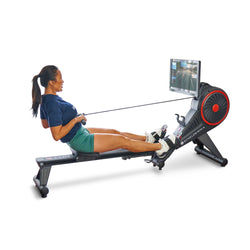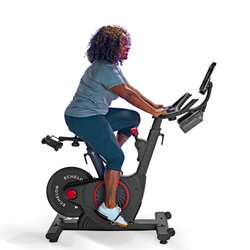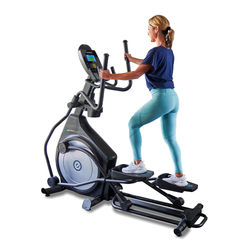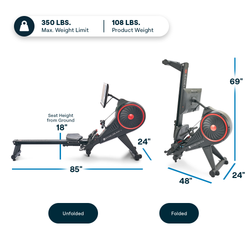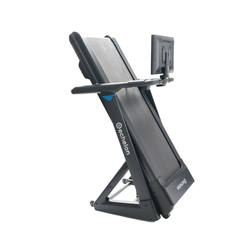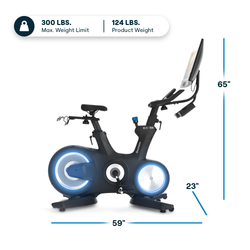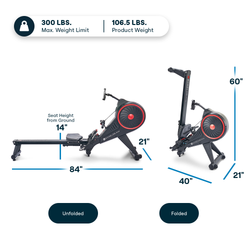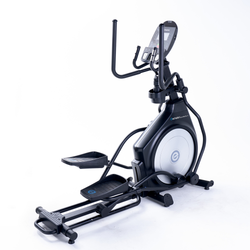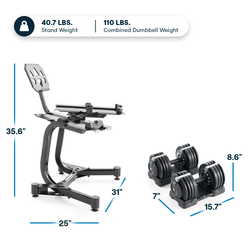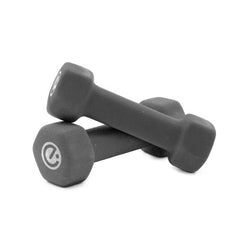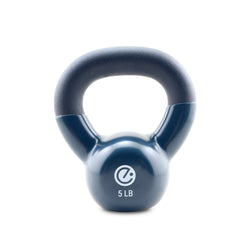Level Up Your Strength Training Game: Advanced Techniques Revealed

Are you looking to take your strength training to the next level? If so, you've come to the right place! In this blog post, we will be exploring advanced strength training techniques that will help you reach peak performance. We'll go over various methods and exercises that you can incorporate into your workouts to help you push your body and mind to the limit. With this knowledge, you'll be able to level up your strength training game and get the results you desire. So, if you're ready to take your strength training to the next level, let's dive in!
Benefits of Advanced Strength Training
While strength training has always been an essential part of any fitness regimen, advanced strength training techniques can take your workouts to a whole new level. Here are some of the benefits you can expect to enjoy:
1. Increased Muscle Size and Strength: Advanced strength training techniques push your muscles beyond their comfort zone, forcing them to adapt and grow stronger. With time and consistency, you can expect to see a significant increase in muscle size and strength.
2. Improved Physical Performance: Whether you're an athlete or just looking to improve your overall physical abilities, advanced strength training can help. It increases power, speed, and agility, making it easier to perform challenging exercises or excel in your favorite sport.
3. Injury Prevention: Advanced strength training improves joint stability and muscle balance, reducing the risk of injury. As you build stronger muscles, your body becomes more resistant to injury and better equipped to handle the demands of everyday life.
4. Metabolic Boost: Advanced strength training can also help boost your metabolism, making it easier to burn fat and maintain a healthy body weight. The increased muscle mass and elevated heart rate associated with this type of training can help you burn more calories throughout the day.
In summary, advanced strength training is a fantastic way to take your fitness to the next level. By challenging your muscles with advanced techniques, you can expect to see significant gains in strength, size, and physical performance, all while reducing the risk of injury and boosting your metabolism.
Common Mistakes to Avoid in Advanced Strength Training
When it comes to advanced strength training, it's important to remember that with great power comes great responsibility. Pushing your body to its limits requires a level of expertise and knowledge that not all fitness enthusiasts possess. To ensure that you're getting the most out of your workouts while also staying safe, it's crucial to avoid common mistakes that could hinder your progress.
One of the biggest mistakes beginners make when transitioning to advanced strength training is not understanding the importance of proper form. When lifting heavy weights, it's easy to let your form slip and compromise your safety. Poor form not only increases your risk of injury but also decreases the effectiveness of your exercises.
Another mistake is not taking the time to warm up and stretch before your workouts. Advanced strength training puts a lot of stress on your muscles and joints, and failing to prepare them properly can lead to strains, sprains, and other injuries.
Finally, overtraining is another common mistake that many people make. While it's important to push yourself to see progress, doing too much too soon can lead to burnout and decreased performance. It's important to find the right balance between challenging yourself and allowing your body time to recover.
By avoiding these common mistakes, you can make the most out of your advanced strength training routine while also protecting your body from injury.
Progressive Overload: The Key to Advanced Strength Training
In the world of strength training, progressive overload is often hailed as the key to unlocking advanced levels of strength and muscle development. Simply put, progressive overload is the practice of gradually increasing the demands placed on your muscles over time.
When you first begin your strength training journey, your muscles adapt and become stronger in response to the stress they encounter during workouts. However, as your muscles become more efficient and adapted to your current routine, they require more stimulus to continue growing and developing.
This is where progressive overload comes into play. By consistently increasing the intensity, volume, or complexity of your workouts, you force your muscles to adapt and become stronger. This can be achieved through various methods, such as adding more weight, increasing the number of repetitions, decreasing rest times, or incorporating advanced exercise techniques.
It is important to note that progressive overload should be applied gradually and within reason. Pushing your muscles too hard and too fast can lead to injuries or overtraining. The key is to strike a balance between challenging your muscles and allowing for adequate recovery.
To effectively apply progressive overload, it is essential to track your progress and regularly assess your performance. Keep a record of the weights lifted, reps completed, and any other relevant details. This will allow you to objectively measure your progress and make informed adjustments to your training.
In summary, progressive overload is the key to advancing your strength training game. By progressively increasing the demands placed on your muscles, you can continue to challenge and stimulate them, leading to continued growth and development. So, don't be afraid to step out of your comfort zone and push your limits – your muscles will thank you for it!
Advanced Exercise Techniques to Challenge Your Muscles
Once you've mastered the basics of strength training, it's time to take your workouts to the next level. Advanced exercise techniques can help you challenge your muscles in new ways, ensuring that you continue to make progress and achieve your fitness goals.
One advanced exercise technique to try is the drop set. This involves performing an exercise with a heavy weight until failure, then immediately reducing the weight and continuing with the exercise until failure again. Drop sets help to fatigue the muscle fibers even further, promoting muscle growth and increasing strength.
Another technique to incorporate into your advanced strength training routine is supersets. Supersets involve performing two exercises back to back with little to no rest in between. This technique increases the intensity of your workouts and can help you save time in the gym. For example, you can perform a set of squats immediately followed by a set of lunges.
To target your muscles from different angles, consider incorporating exercises with different grips or stances. For example, you can perform dumbbell bench presses with a neutral grip or a close grip. This variation not only challenges your muscles in new ways but also helps to prevent plateaus and boredom.
In addition, advanced strength training often includes exercises that require balance and stability. Exercises such as single-leg deadlifts or Bulgarian split squats not only challenge your muscles but also improve your overall athleticism.
Remember, it's essential to prioritize safety and proper form when attempting advanced exercise techniques. Always start with a weight that challenges you but allows you to maintain proper form. As you become more comfortable and proficient, gradually increase the weight or intensity. Push yourself, but listen to your body and adjust as necessary.
By incorporating advanced exercise techniques into your strength training routine, you can continue to challenge your muscles, overcome plateaus, and achieve new levels of strength and fitness. So go ahead and level up your workouts - your muscles will thank you.
Periodization: Structuring Your Training for Optimal Results
As you advance in your strength training journey, it's important to structure your training in a way that maximizes your gains. Periodization is the key to achieving optimal results from your strength training program.
Periodization involves dividing your training into specific periods or cycles, each with a different focus. This allows you to systematically increase the intensity of your training while minimizing the risk of injury and avoiding plateaus.
There are several different types of periodization, but the most common is linear periodization. This involves gradually increasing the intensity and volume of your training over a period of several weeks or months, followed by a period of reduced training intensity and volume to allow for recovery.
Another type of periodization is undulating periodization, which involves changing the intensity and volume of your training on a weekly or even daily basis. This can be particularly effective for more experienced lifters who have already gone through linear periodization.
No matter which type of periodization you choose, it's important to regularly assess your progress and adjust your training accordingly. This might involve changing up your exercises or increasing the weight or reps of your lifts.
Remember, the key to achieving optimal results from your strength training program is to challenge yourself and keep pushing beyond your limits. By structuring your training with periodization, you'll be well on your way to reaching your strength goals.
Recovery Strategies for Advanced Strength Training
One of the most critical components of advanced strength training is recovery. Without proper recovery, your body won't be able to keep up with the demands of high-intensity training, and you could end up with injuries or burnout.
Here are some effective recovery strategies that will help you get the most out of your advanced strength training program:
1. Sleep: Adequate sleep is essential for recovery, especially if you're doing heavy lifting. Make sure to get at least seven to nine hours of sleep every night.
2. Nutrition: Eating a balanced diet with plenty of protein, healthy fats, and carbohydrates will help support muscle recovery and growth.
3. Stretching and Mobility Work: Regular stretching and mobility work can help improve your range of motion, reduce muscle soreness, and prevent injuries.
4. Active Recovery: Incorporate low-impact exercises like swimming, yoga, or walking into your routine on rest days to increase blood flow and help speed up the recovery process.
5. Massage and Foam Rolling: Massage and foam rolling can help release tight muscles and improve circulation, allowing for faster recovery and improved performance.
6. Stress Management: Stress can interfere with your recovery process, so make sure to take time to de-stress and relax. This can be through meditation, yoga, or other stress-relieving activities.
By incorporating these recovery strategies into your routine, you can ensure that your body is ready to handle the challenges of advanced strength training and continue making progress towards your goals.


